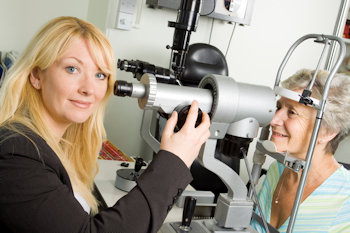How to Detect a Cataract
If your vision and quality of life have deteriorated, you may have a cataract. We would be delighted to answer your questions about how we detect cataracts at Elmquist Eye Group and help restore clarity and crispness in your vision.
Elmquist Eye Group in Fort Myers and Cape Coral, Florida provides complete eye care services for all members of your family, from children to seniors.
 Dr. Rodriguez is a skilled, board certified ophthalmologist and surgeon, and Drs. Wagner and Burt are board certified optometrists. With state-of-the-art facilities, we can help you achieve the best possible visual results from your cataract surgery.
Dr. Rodriguez is a skilled, board certified ophthalmologist and surgeon, and Drs. Wagner and Burt are board certified optometrists. With state-of-the-art facilities, we can help you achieve the best possible visual results from your cataract surgery.
Cataract Symptoms
Although most cataracts are age-related, you don’t have to be a senior citizen to get one. Individuals can have an age-related cataract in their 40s and 50s, but they are usually small and do not affect vision. It is after the age of 60 that cataracts are most responsible for diminished vision.
Symptoms of a cataract may include blurred or double vision, glare or haloes from lights, poor night vision, and frequent changes in prescription for your eyeglasses or contact lenses. The first evidence of a cataract is usually detected during a cataract evaluation.
The dilated comprehensive eye exam typically includes a visual acuity test that measures how well you see at various distances, tonometry that measures the pressure inside the eye, and a special magnifying lens that enables the eye doctor to examine your retina and optic nerve for signs of cataract and other eye problems.
If you believe cataracts may be interfering with your normal activities, such as reading the newspaper, working on your computer and driving, or are finding it difficult to enjoy everyday life, it’s time to discuss surgery with Dr. Elmquist.
About Cataract Surgery
Traditional cataract surgery involves making a tiny incision on the side of the cornea to remove the cataract-clouded lens. This is done by using a hand-held instrument that has a metal blade. Then, using a process called phacoemulsification, ultrasound waves break up the cataract so it can be suctioned out. Once removed, an artificial IOL is inserted to replace the natural lens. The corneal tissue then heals itself without the need of any sutures.
We can now use laser technology to perform many of the traditional cataract surgery steps. 3D imaging allows the surgeon to map out the unique characteristics of your eye and cataract so that very precise incisions can be made. Instead of a hand-held instrument, the surgeon uses a special laser to make the incision in the cornea as well as to break up the cloudy lens and remove it. Laser-assisted cataract surgery is incredibly accurate and provides for quick recovery and the best visual outcomes possible.
Whether traditional or laser-assisted cataract surgery is right for you will depend on a number of factors that can only be assessed by your cataract surgeon. Both procedures are extremely safe, common, and have high success rates.
If you have questions about how to detect a cataract or about cataract surgery, the doctors at Elmquist Eye Group are among the best qualified to answer them. Get in touch with us today at (239) 936-2020 to schedule an evaluation.
